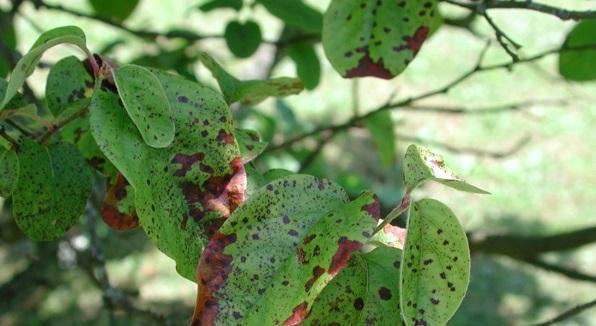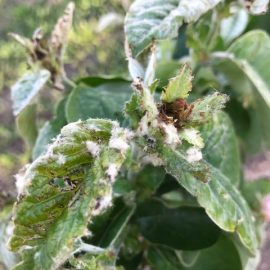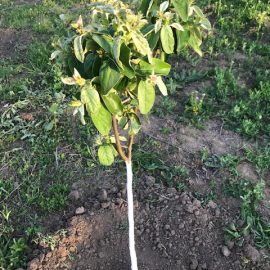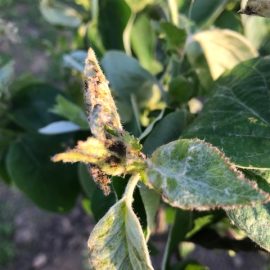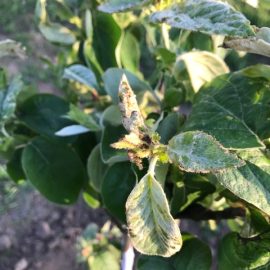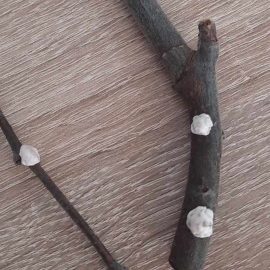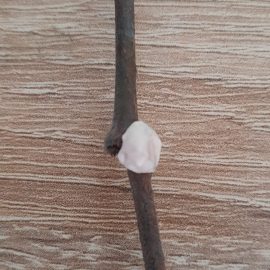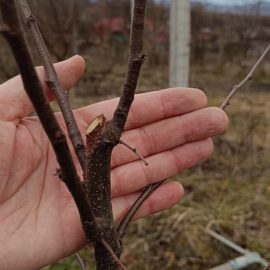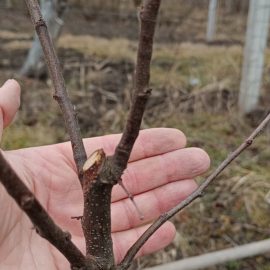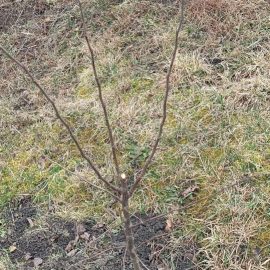Fabraea leaf spot (Fabraea maculata) – identify and control
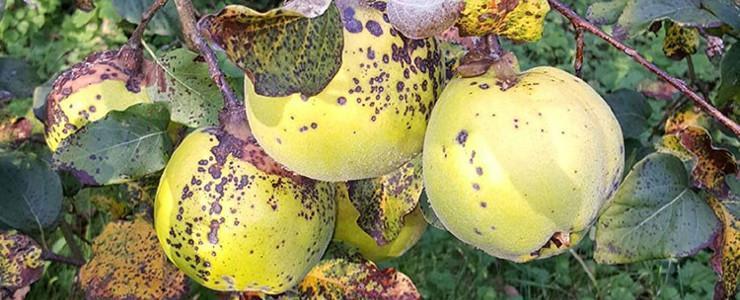
Fabraea leaf spot on quince, Fabraea maculata, is common in nurseries and orchards. The fungus parasitizes on quince and appears even less frequently on apple, medlar, or rowan. In years with frequent rains in summer, the disease becomes very dangerous in nurseries.
Symptoms – Fabraea Leaf spot on quince leaves
The attack is manifested on leaves and rarely on shoots and fruits. Circular spots appear on the leaves, between 2-10 mm in size, which at first have a yellow-cream color, and later become reddish. In the center of these spots, 1-2 rounded, crusty, black spots appear on the upper side of the leaves, representing the fruiting bodies of the fungus. The spots may join and the leaves will have large portions of attacked tissue. During a strong attack, the tree may lose its leaves in July-August.
The attack on the young shoots appears later, in summer, manifesting itself when the bark gets brown, accompanied by drying of their top.
On fruit, the disease is manifested by the appearance of spots similar to those found on leaves. When the spots on the leaves are grouped, the pulp cracks and is often rots, due to the entering of other pathogens into the tissues.
The pathogen is Fabraea maculata. The first infections in spring are produced by the spores which form on the shoots attacked in autumn. The fungus overwinters in the bark of the branches. The spores reach maturity in May and cause leaf infections. In rainy years, the disease can be serious. Although the fungus can also form resistant fruits, its transmission is ensured only by the resistance mycelium from the shoots and mycelia (dry mycelium) on the fallen leaves, on which spores will appear in the spring.
Prevention and control. It is recommended to collect and destroy fallen leaves or bury them in the soil by deep autumn plowing.
During the growing period, chemical treatments with specific fungicides are recommended.
Recommended products
-
You can find products on a different store
Change Store -
You can find products on a different store
Change Store -
You can find products on a different store
Change Store -
You can find products on a different store
Change Store -
You can find products on a different store
Change Store -
You can find products on a different store
Change Store -
You can find products on a different store
Change Store -
You can find products on a different store
Change Store -
You can find products on a different store
Change Store -
You can find products on a different store
Change Store -
You can find products on a different store
Change Store -
You can find products on a different store
Change Store -
You can find products on a different store
Change Store -
You can find products on a different store
Change Store -
You can find products on a different store
Change Store -
You can find products on a different store
Change Store -
You can find products on a different store
Change Store -
You can find products on a different store
Change Store -
You can find products on a different store
Change Store -
You can find products on a different store
Change Store -
You can find products on a different store
Change Store -
You can find products on a different store
Change Store -
You can find products on a different store
Change Store -
You can find products on a different store
Change Store














































































































































































































































































































































































































































